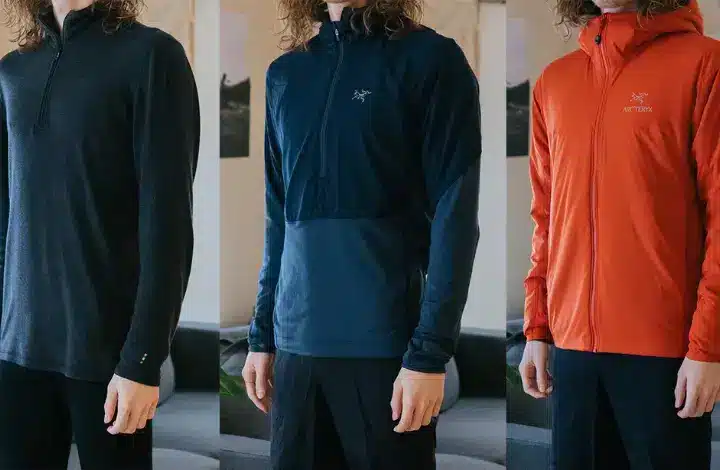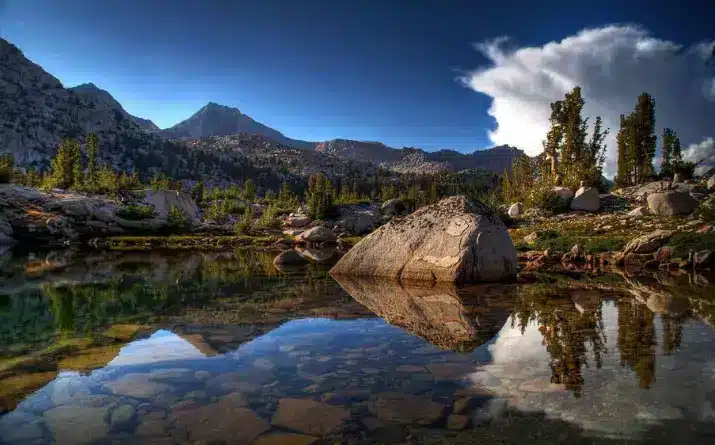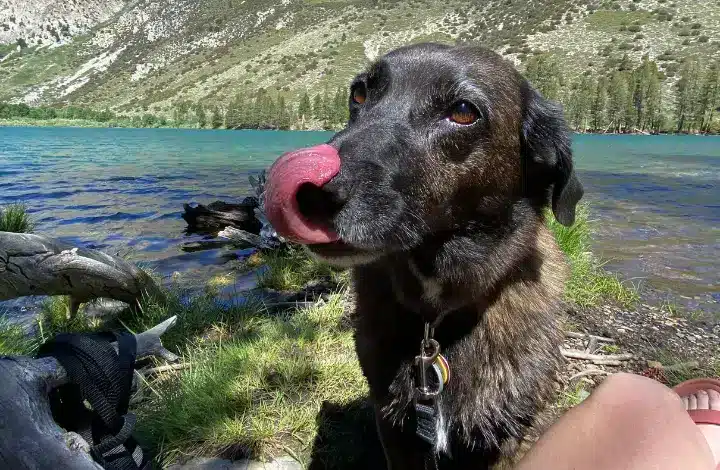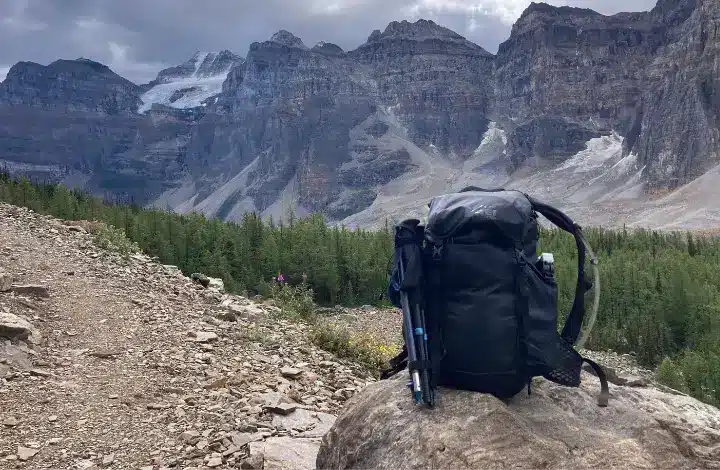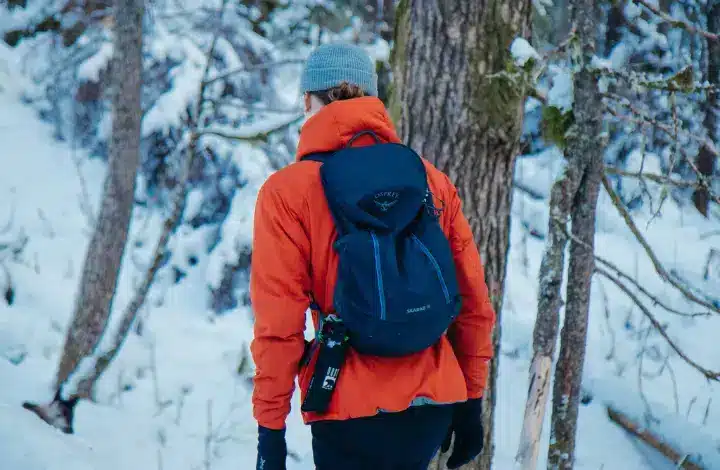How to Properly Layer Clothes for Outdoor Adventures
When it comes to exploring the outdoors, one of the most important components in our arsenal of equipment is our clothing. And by choosing the correct type of clothing, we can safeguard this protective air, stay dry, and stay warm. That’s why it’s important to understand how to properly layer clothes for outdoor adventures.
You want regulate your body temperature and protect yourself from the elements. Certain fabrics keep us comfortable by creating a thin insulating layer of air next to the skin. Dressing in layers makes it much easier to adapt to changing weather conditions on the fly.
Heat, cold, precipitation and wind are all factors that affect our comfort on the trail.
The main thing to be concerned about is staying dry, or, if we get wet, drying quickly and efficiently. Both outside precipitation and sweat coming from inside are equally able to destroy comfort (and safety).
The upfront cost for a layering system can be a lot to take on, especially all at once, but investing in high-quality clothing pays off immediately. Let’s dive deeper into each specific layer in our layering system.
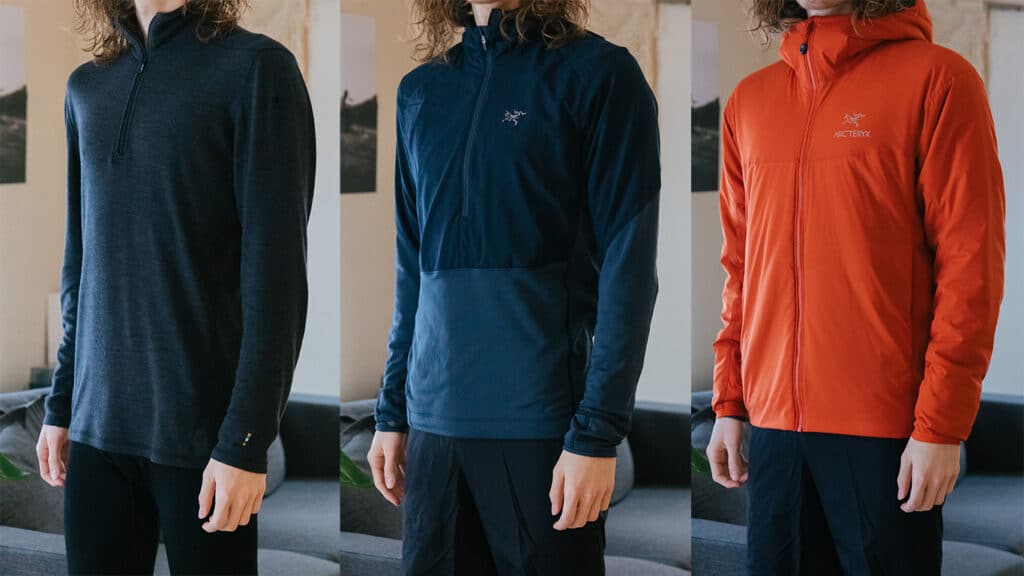
How and Why to Layer Clothes for Outdoor Adventures
Base Layers
A base layer is the first layer we put on. It should be touching our skin.
The purpose of a base layer is to regulate body heat by allowing any sweat to evaporate, thus keeping us dry. Sweat is transferred away from our skin by the base layer, and then quickly dries. Clothing with this capability is also known as moisture-wicking.
MERINO WOOL OR POLYESTER
It is very important to have a good set of base layers. Think of them as the foundation of our layering system. Merino wool and polyester are both popular options for base layer materials, each with its own pros and cons.

In most cases, merino wool is the better choice.
Merino wool products are made from the wool of, you guessed it, merino sheep. These natural fibers are popular for both comfort and warmth.
Another favorite feature is the anti-stink properties inherent in the wool. For longer trips on the trail, everyone is thankful for clothing that doesn’t reek after the first day.
The downside to base layers made of Merino wool is that they are typically rather expensive. Clothing made of Merino wool may also be fairly delicate.
For myself and many others, these downsides aren’t enough to outweigh the amazing comfort of merino wool products.
Polyester, on the other hand, is fairly comfortable, durable, and usually cheaper. Overall, polyester isn’t a bad choice. If you aren’t planning to wash it after each use though, be prepared for some stinky base layers.
Midlayers
Midlayers are our main defense against the cold.
A midlayer’s function is to trap warm air close to our body, slowing heat loss, while also allowing any perspiration to evaporate through. For colder situations, a thicker layer of insulating air keeps us warmer.
Having two midlayers is a common practice for colder conditions. One lightweight midlayer and one medium weight midlayer allow for greater adjustability.
CHOOSE PUFFY JACKET OR FLEECE LAYER
Our midlayer can be an insulated “puffy” jacket filled with goose-down or synthetic materials.
It can also be a lightweight polyester or synthetic fleece layer. Midlayers are often not very weather resistant on their own. However, having a small degree of weather resistance can increase our comfort levels considerably.
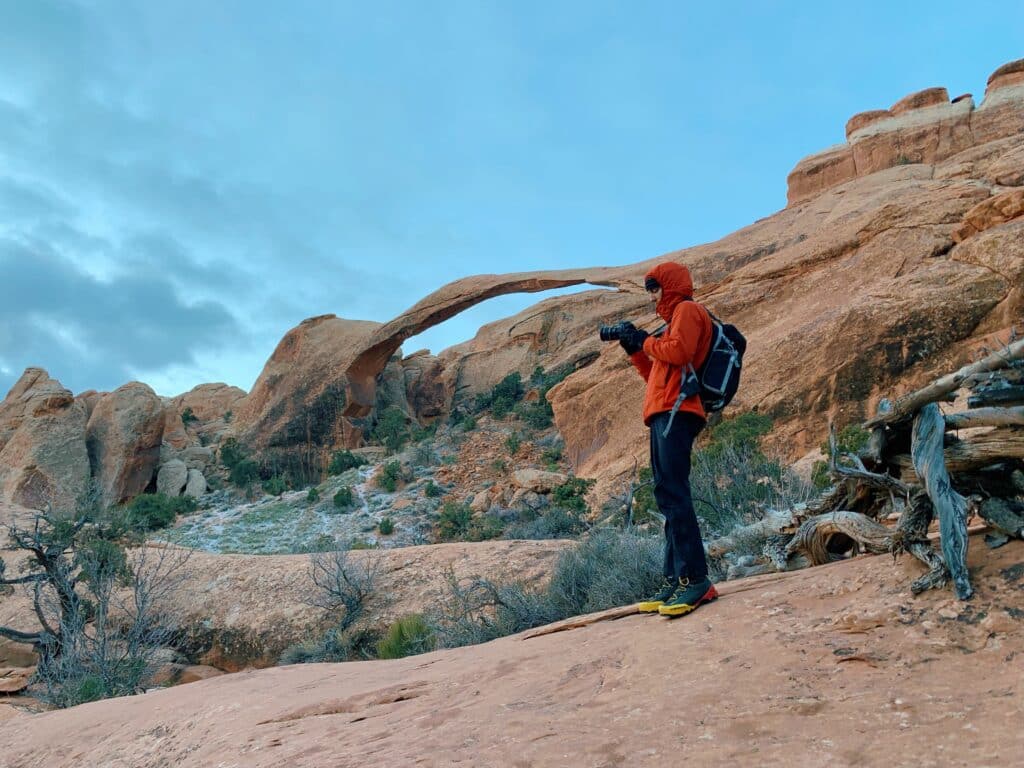
SYNTHETIC FILL VS GOOSE-GOWN
The distinction between a synthetic fill and a goose-down fill in our puffy jacket is a pretty big one. For conditions where we are expecting a mix of snow and rain, opting for a synthetic puffy jacket may be better.
Synthetic puffy jackets hold their insulating properties even when wet. Goose down on the other hand loses most of its insulating properties once exposed to precipitation.
In conditions that aren’t wet, choose a down jacket for a greater warmth-to-weight ratio and amazing packability.
Shell Layers
A shell layer will be our main defense against the elements. Since our other layers aren’t fully weatherproof, a shell protects our midlayers from wind and precipitation.
A shell jacket constructed with waterproof-breathable fabric will repel wind, allow water vapor from sweat to escape, and stop snow and rain thanks to a durable water repellent (DWR).
Our shell layer could be a hardshell, softshell, or wind shell. It’s all dependent on what the situation calls for.
WINDSHELL, SOFTSHELL, OR HARDSHELL
Windshells are very compressible, lightweight, and breathable, yet help our body retain heat remarkably well. Ideal for situations with light precipitation, a wind shell is nearly always worth bringing, even if we think we won’t need a shell layer at all.
Softshell jackets are the next step up from wind shells, offering some resistance to drier snow and wind.
Laminated softshells are typically a little more breathable than hardshells, while also having more stretch. This category of shell is great for milder conditions, but hardshell jackets are necessary for heavy precipitation.
Hardshells are the most protective type of shell. They sacrifice breathability in favor of complete protection from the elements.
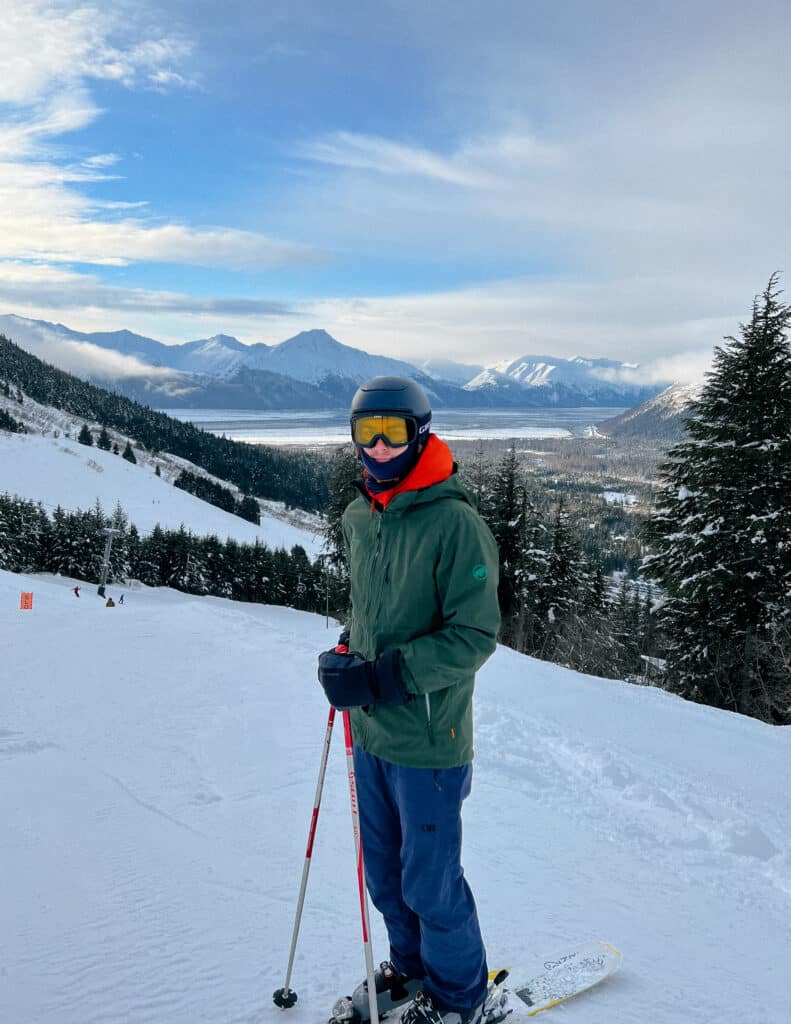
Most shell tops and bottoms will feature some sort of ventilation option such as armpit zippers and leg zippers. This is a much-needed feature to be able to dump unwanted heat.
Extra Parka
An extra parka is not typically needed for general hiking but can be a vital part of our layering system in extremely cold weather scenarios.
This layer is an extra insulating jacket that fits over all of our other layers. Also referred to as a belay jacket.
Other Components
Headwear, handwear, and footwear are a few smaller but equally important components in a layering system.
HEADWEAR
There are a variety of headwear pieces to choose from, varying in weight, material, and use case.
Insulating hats can be made of both natural and synthetic materials, such as merino wool and polyester.
Thin beanies can be worn under helmets while climbing to keep the wind off our ears and trap heat that escapes through our heads. Thicker beanies can help us keep heat in when stopping for a break.
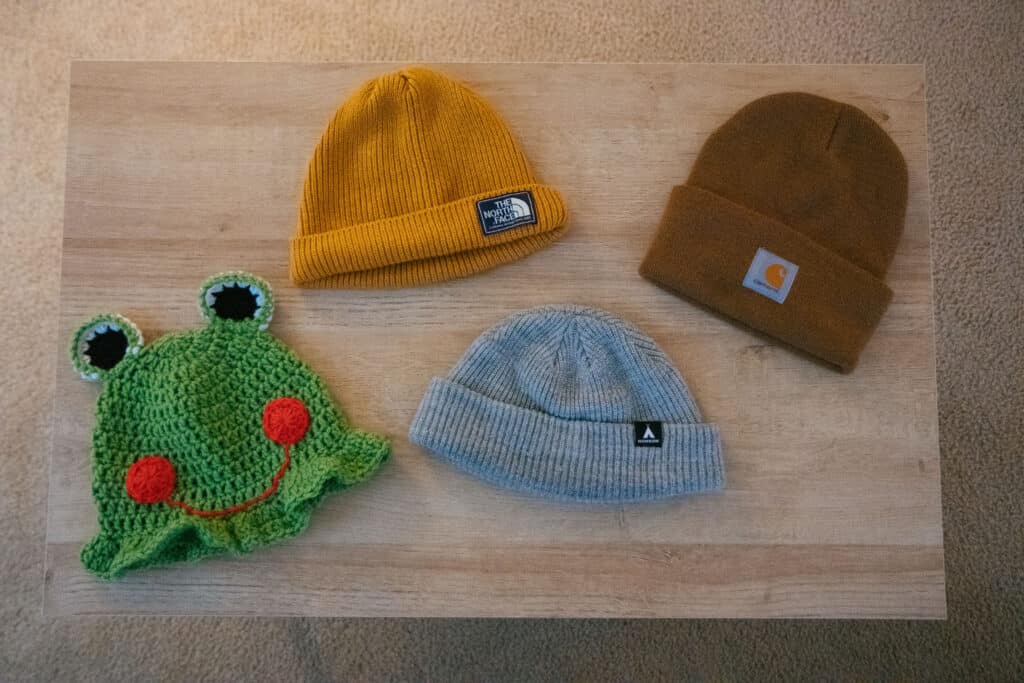
HANDWEAR AND FOOTWEAR
Fingers and toes are notoriously difficult to keep warm. The body will restrict blood flow to these extremities in favor of other more important parts of the body.
Having at least a two-layer glove system can greatly impact our comfort level. A base layer glove underneath an insulating mitten is my personal preference.
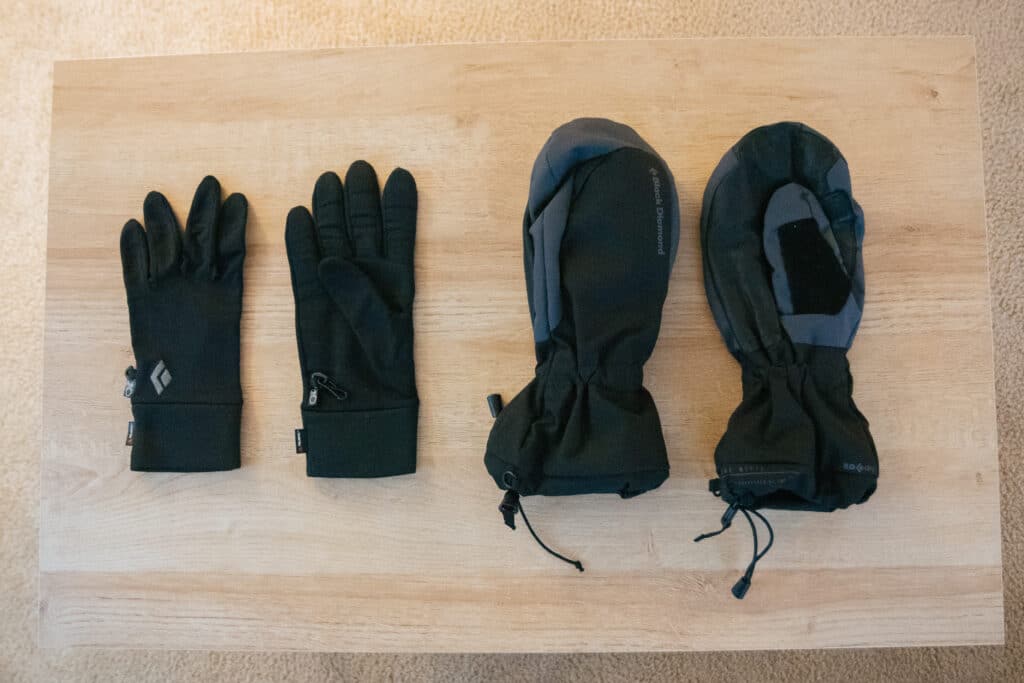
Knowing which socks to wear for different activities is important. For example, you may believe that thicker socks equal warmer feet, but this isn’t always true.
When skiing, wearing thin moisture-wicking socks is worlds better than thick, burly mountaineering socks.
For mountaineering, on the other hand, thick socks can feel much better than thinner socks, but it is important that our boots of choice have ample room for these thick socks. Squished feet equals cold feet.
When to Layer Clothes
Layers for a Warm Summer Day
BASE LAYERS
For a warm sunny day, your “base layer” could be your only layer actually worn.
For the average hiker, simply wearing a cotton t-shirt and comfortable shorts is a popular choice. However, for maximum comfort in a variety of conditions, it may be better to trade in that cotton t-shirt for a lightweight, long sleeve polyester shirt.
This will offer much better sun protection, as well as better moisture-wicking. Cotton will soak up all of your sweat, which becomes extremely uncomfortable whenever stopping for a break. It is better to say no to cotton.
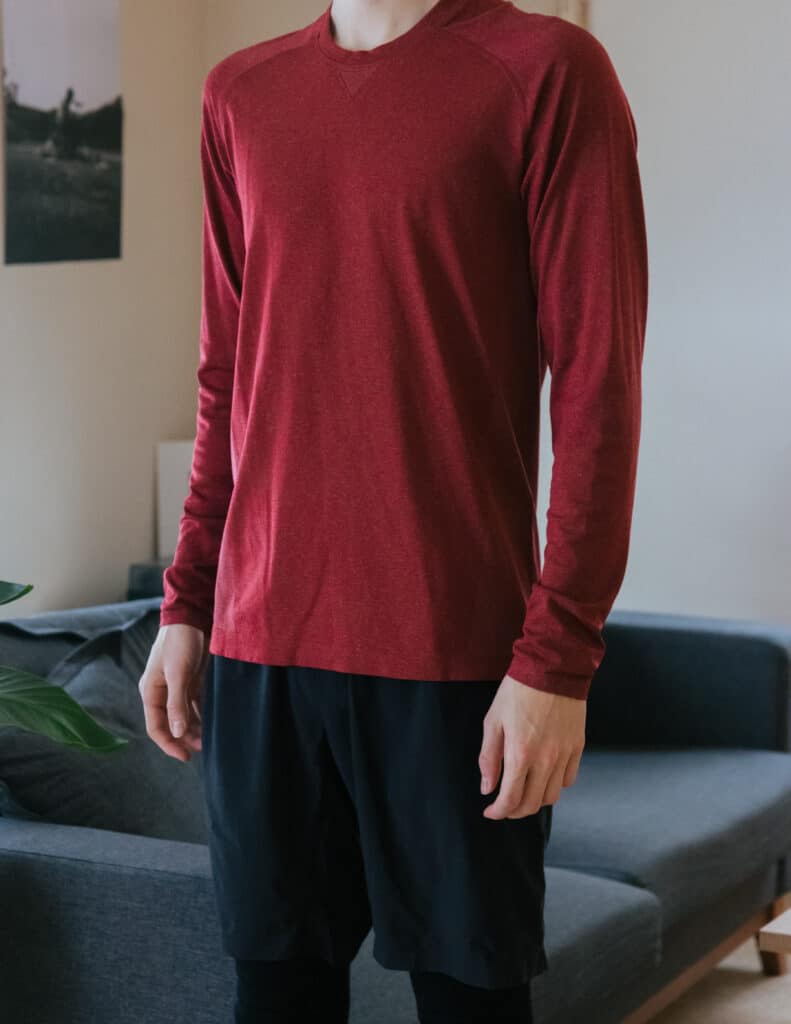
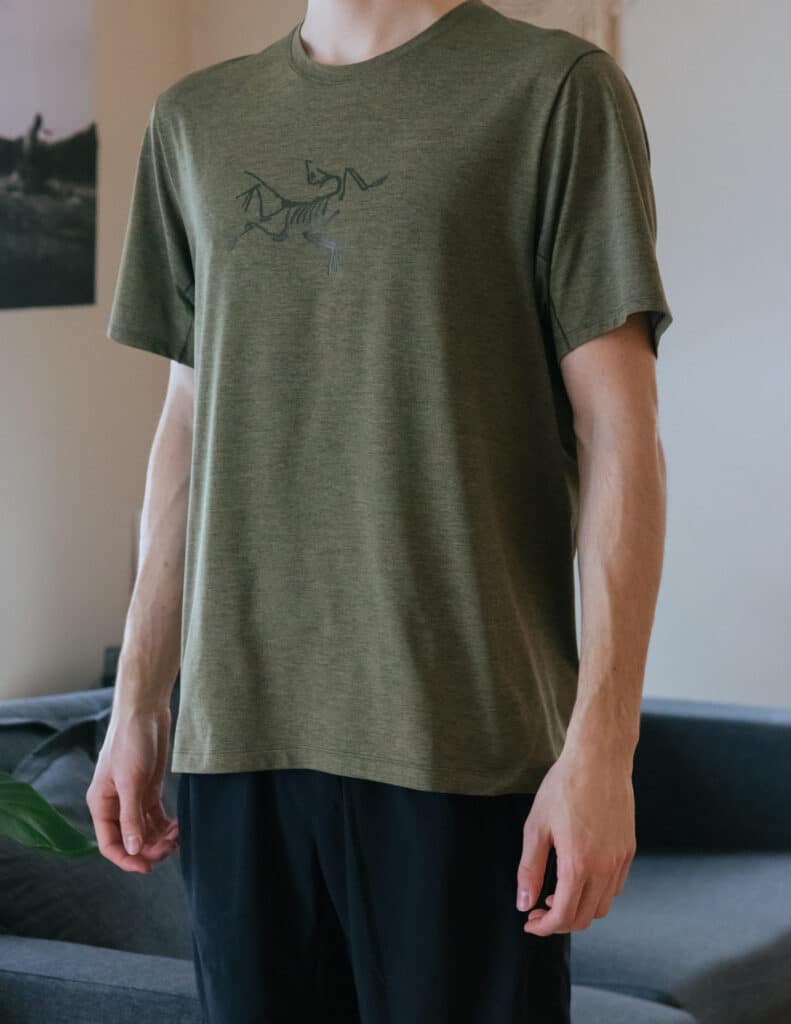
For your legs, it may be preferable to skip a base layer entirely. For a more versatile setup, wearing a lightweight base layer (such as a merino 150) underneath a comfortable pair of synthetic shorts or zip-off pants will keep you comfortable in most conditions.
MIDLAYER
Even if you don’t think you will need it, bringing at least one lightweight midlayer could save the day if conditions change.
Bringing along a puffy jacket may not make sense. But a simple synthetic top, perhaps with a hood, could serve you well when taking a break.
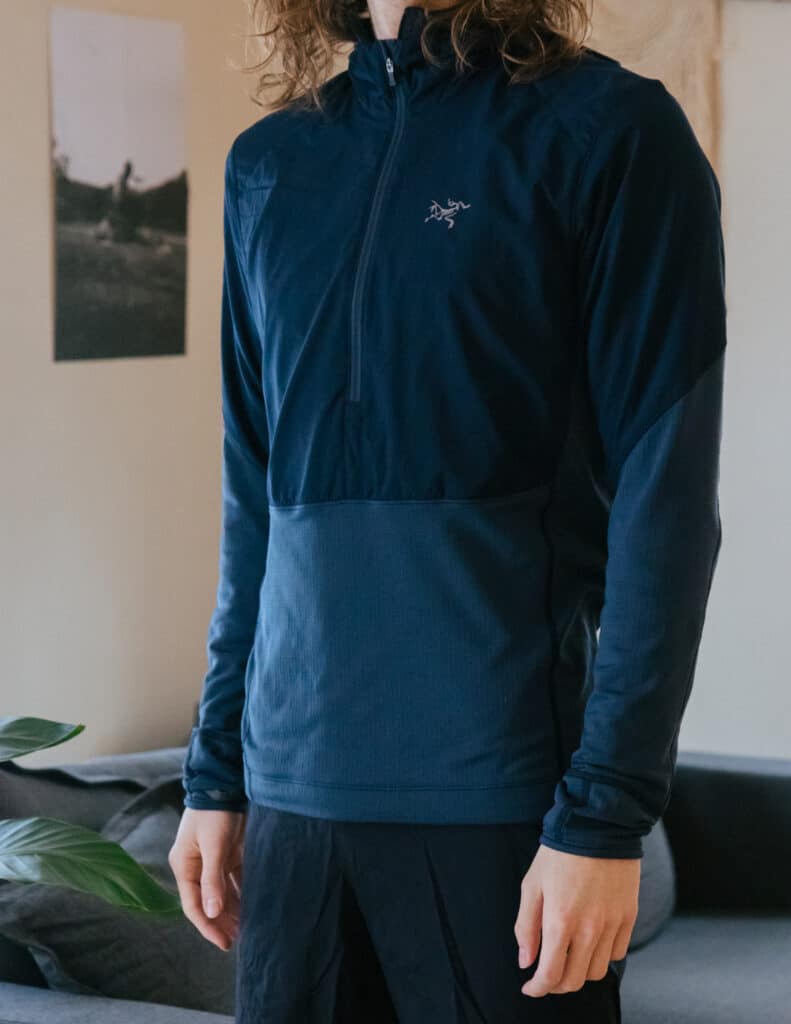
SHELL LAYER
For these conditions, a lightweight wind shell or softshell could provide the necessary protection from the elements.
A highly compressible wind shell will take up barely any space in your bag but will be a welcome addition to your layers in unexpected weather.
If rain is in the forecast, however, choose to bring along a waterproof-breathable shell (either hard- or softshell) with ample vents that allow you to dump heat.
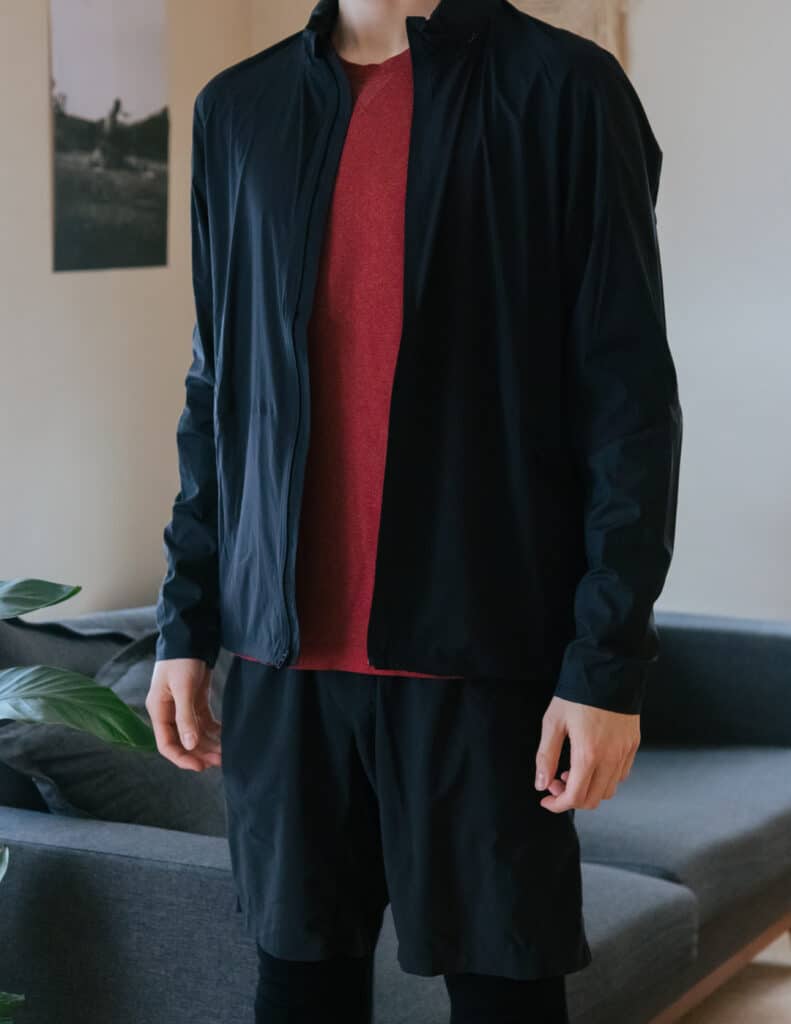
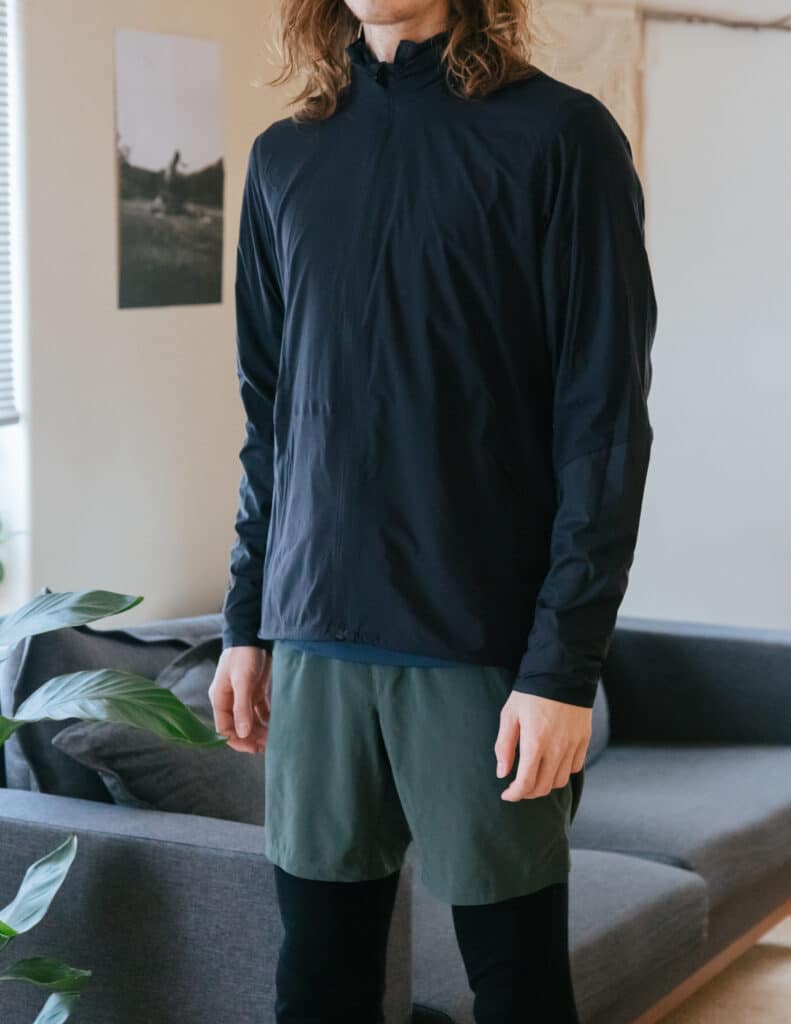
ACCESSORIES FOR SUMMER ADVENTURES
Thin, moisture-wicking socks will allow your feet to breathe and transport perspiration away from your foot. Bringing along a wide-brimmed hat and sunglasses can improve your comfort as well.
Layers for a Cold Winter Day
BASE LAYER
In colder winter conditions, having high-quality base layers is a necessity (in my eyes).
By starting your layering system with a good base, you are setting up the rest of your layering system to be successful in keeping you comfortable. The word “base” can also be understood as “foundation”.
Base layers are the foundation upon which the rest of your clothing is built.
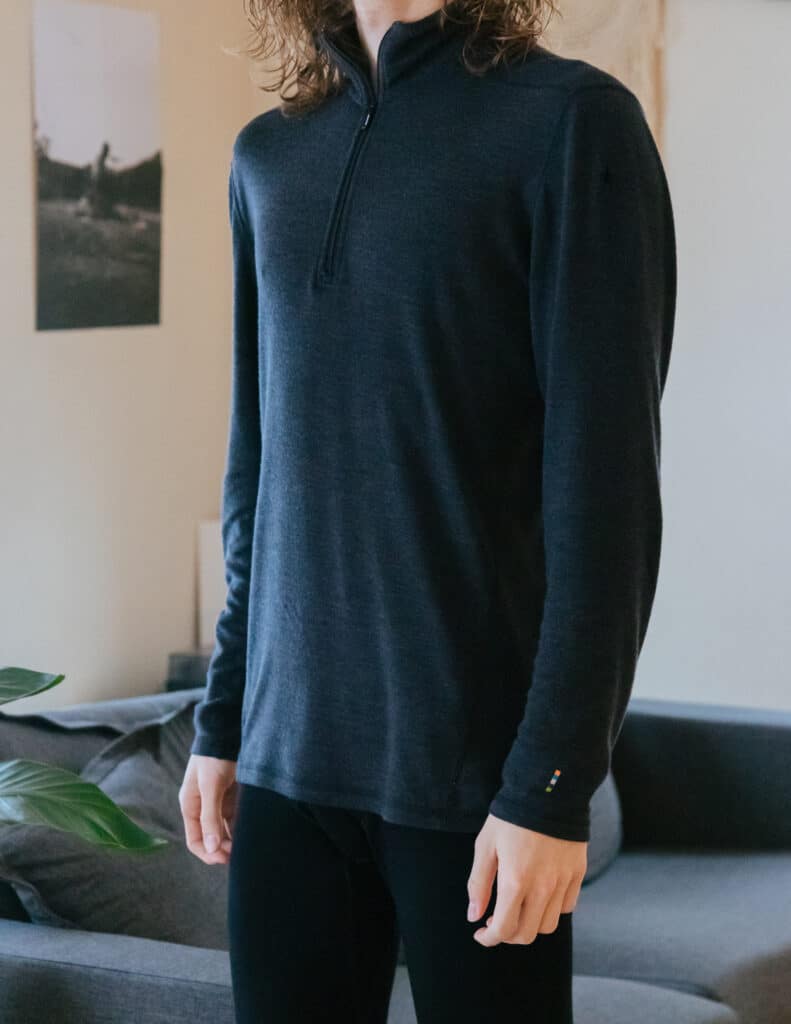
Opting for merino wool tops and bottoms will allow your perspiration to be transferred away from your skin, thus keeping you dry. Choose a mid-to heavy-weight merino wool such as a 260 for maximum warmth.
MIDLAYER
When it comes to warmth, midlayers offer the most help out of all the categories. Colder weather often calls for a greater number and variety of midlayers. Everything from merino wool knit shirts to puffy pants can be useful.
SYNTHETIC FLEECE
Synthetic fleece tops are very popular options for any and every outdoor activity in the cold. Having a wide range of synthetic tops is generally a good idea.
A good wardrobe will have a variety of options, from light to medium to heavy, with different features such as hoods and thumb loops.
With all of these options, we are better able to custom tailor a layering system that is flexible and highly adjustable.
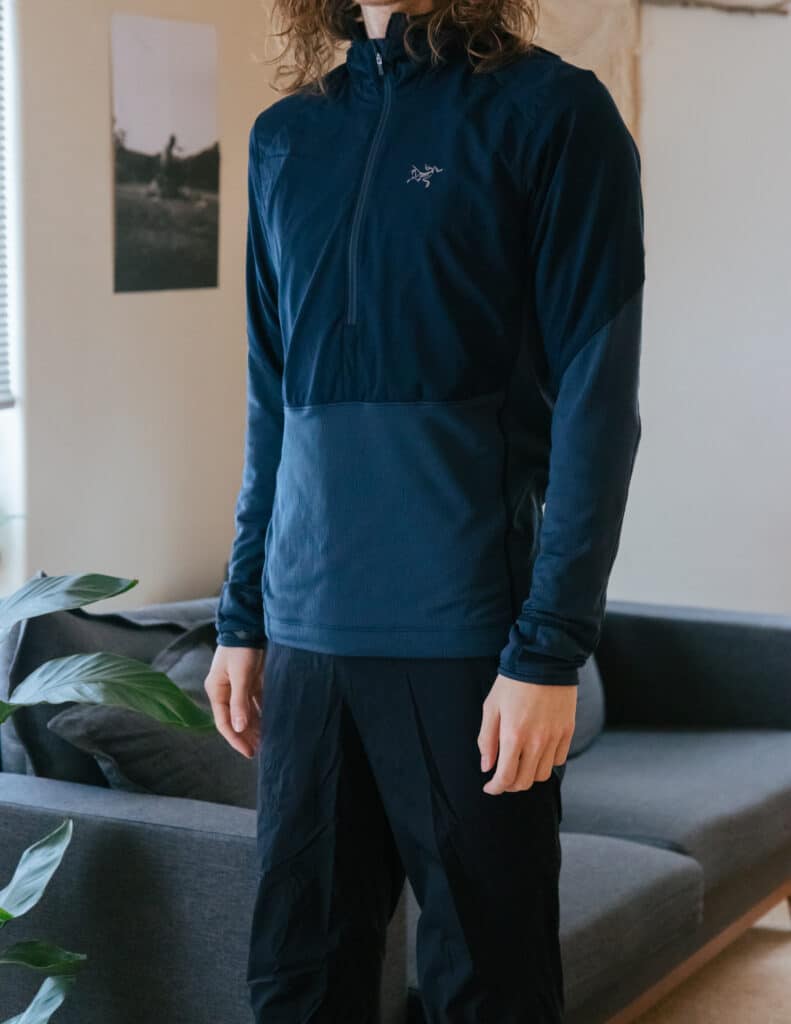
Our first midlayer will typically be a thin synthetic fleece with a hood for extra sun and wind protection if needed. On days where high exertion activities will take place, this fleece layer may be the only midlayer we put on.
For a greater degree of flexibility in changing conditions, carry at least one more light to medium weight fleece layer in your bag.
INSULATED JACKET
Puffy jackets are an essential part of any cold-weather layering system.
Besides when traveling uphill or in other high exertion scenarios, throwing on an insulated jacket contributes greatly to your comfort. The ideal puffy will be lightweight, packable, and work well with other garments in your layering system.
TREKKN is ready-supported. We may earn a small commission for qualifying purchases, at no additional cost to you. Please read our disclosure for more information.
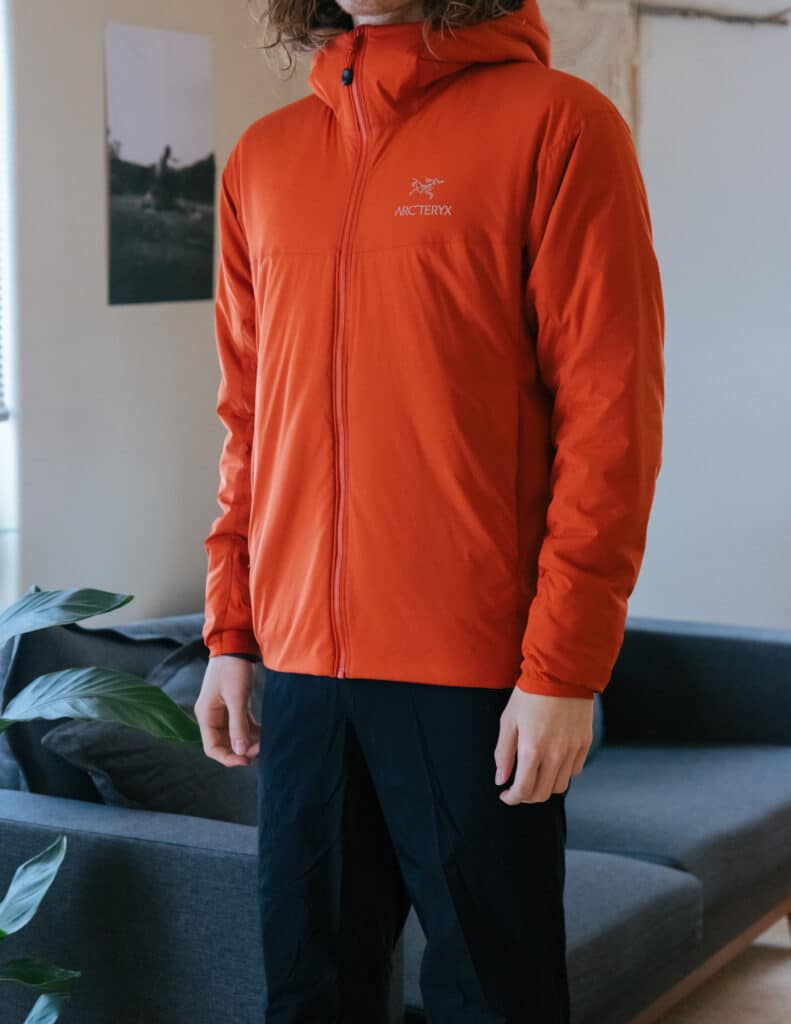
In snowy/wet conditions, it would be better for your puffy jacket to be synthetic (in most cases).
In order to have the freedom to strip layers to regulate body temperature, it is nice for your midlayers to have at least some amount of weather resistance.
Synthetic insulating jackets retain their insulating properties when wet, which makes them ideal candidates for wetter winter conditions.
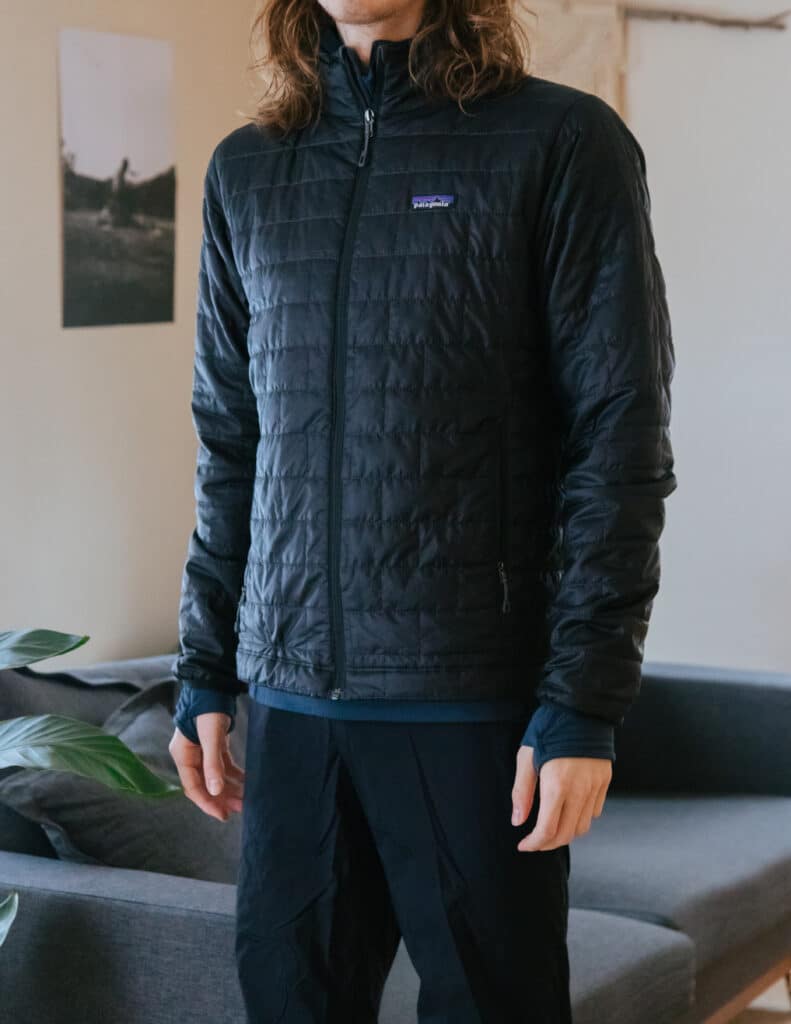
In dry conditions, opting for a goose-down jacket will keep you very warm while also packing down incredibly small.
For extreme weather scenarios, bring along a puffy layer for your legs to help them retain heat while standing still or sitting down. Look for synthetically insulated pants with zippers that travel up and down the entire sides of the pant for maximum breathability.
HARDSHELL JACKETS
In stormy winter conditions, employing the use of a hardshell is vital for staying as dry and warm as possible. A high-quality hardshell could very well be the most expensive piece of clothing you will own, but also one of the most important.
The most popular option for a do-it-all hardshell is 3-layer GORE-TEX.
Every garment composed of 3-layer GORE-TEX is sure to break the bank but is also sure to protect you from the elements while being remarkably comfortable.
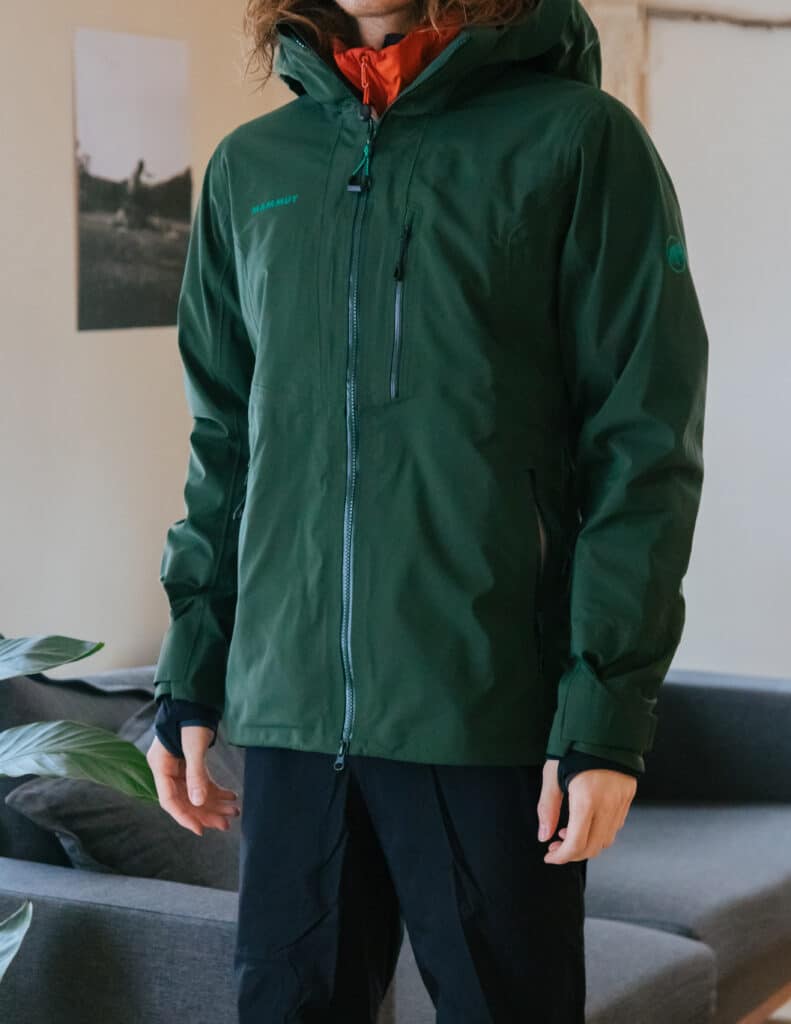
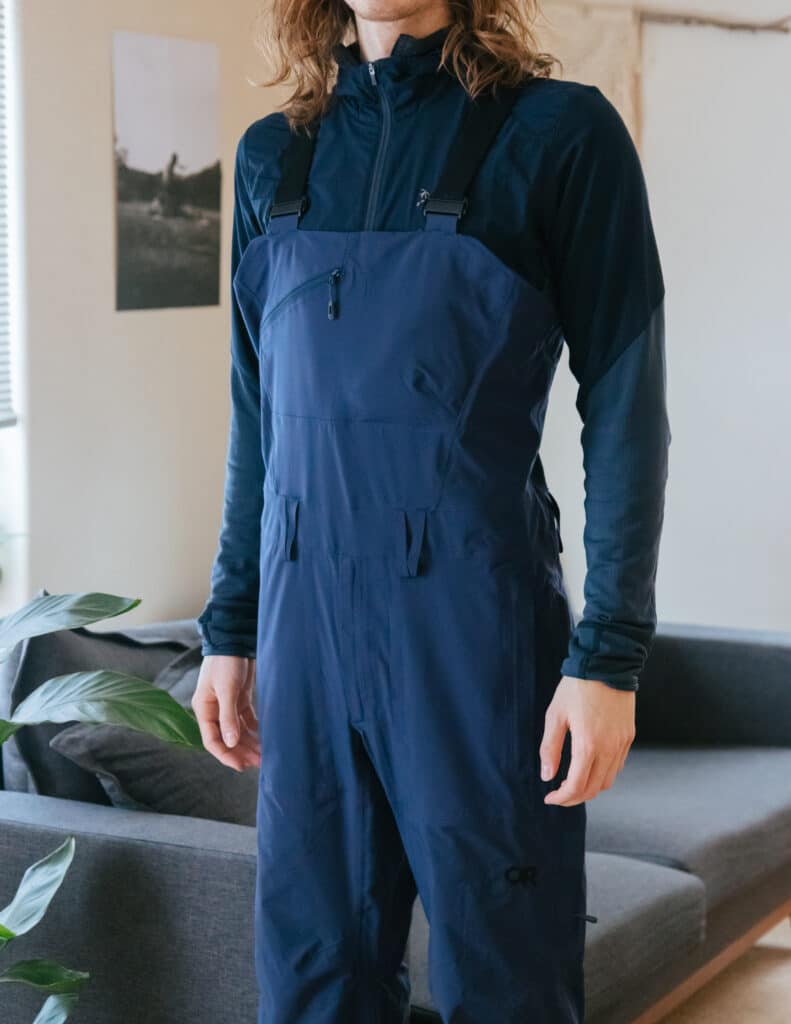
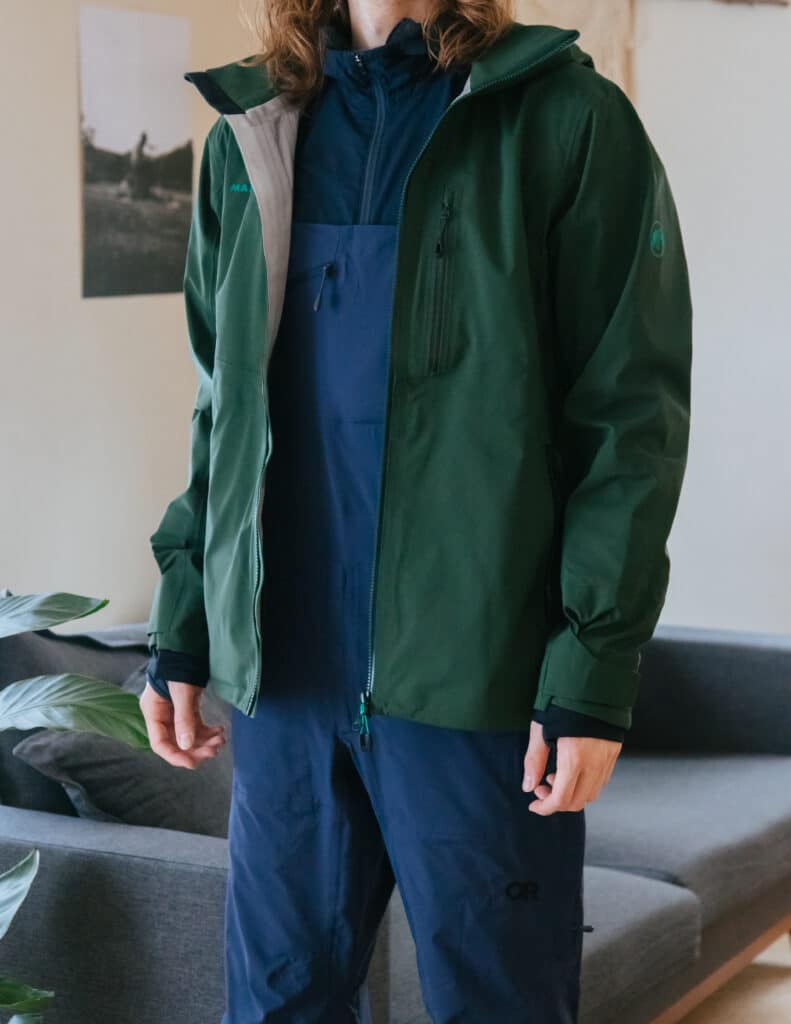
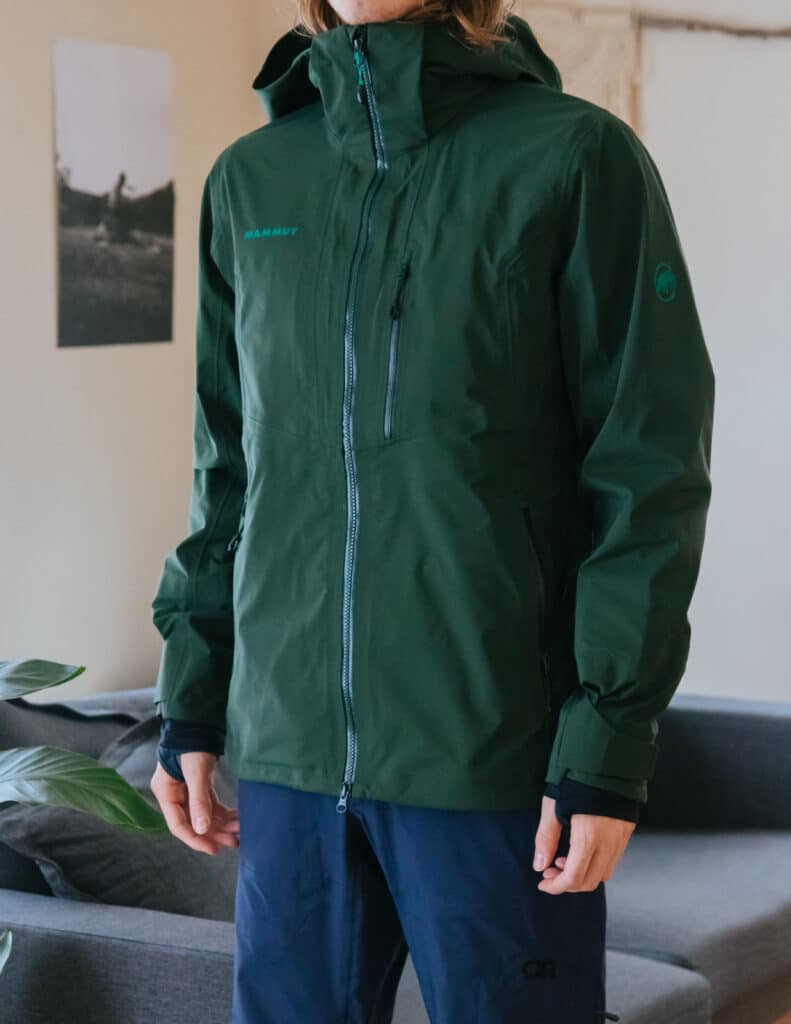
Even if you don’t opt for a complete GORE-TEX setup, choosing a 2- or 3-layer waterproof-breathable fabric is highly recommended for complete waterproofness and acceptable breathability.
Make sure any hardshell garment you choose comes equipped with plenty of ventilation options. These vents are very important for dumping unwanted heat.
Hardshell pants, such as a GORE-TEX bib or 2-layer rain pants, are ideal for snowy winter conditions.
INSULATED VS. NON-INSULATED SHELLS
It is important to make the distinction between actual shells and insulated shell jackets.
For activities such as resort skiing, choosing to purchase a do-it-all layer like an insulated outer jacket is very popular.
It may seem like these all-in-one layers make the most sense, but try your best to stay away from them if hiking, skiing, or climbing. We want to have a very versatile setup, and that becomes harder when our layer that is supposed to protect us from the rain and snow is also the layer that keeps us the warmest.
We want these two factors to be independent of each other. It is better to have the ability to shed your insulated layer while still having weather protection.
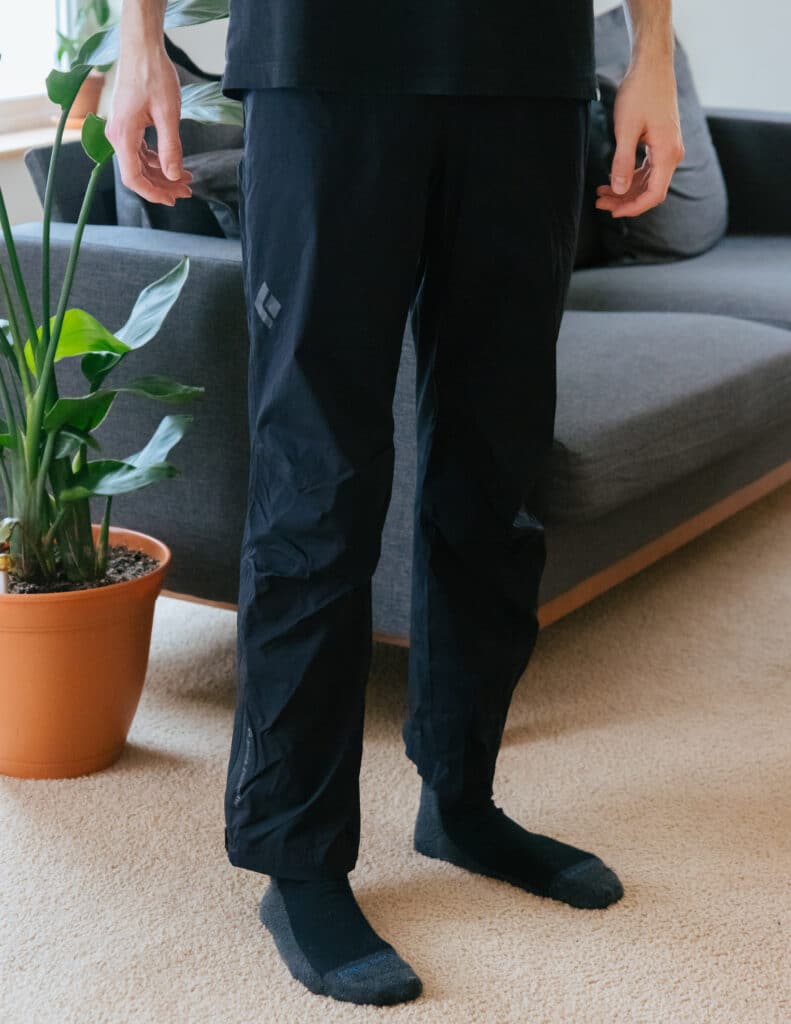
SOFTSHELLS
In less intense conditions with minimal precipitation, a softshell will stretch better and be a bit more breathable than a hardshell. For reasonable weather resistance, a double-weave softshell as an outer layer may be the best choice.
ACCESSORIES FOR WINTER ADVENTURES
For days where you will be standing still for long periods of time, such as when belaying during a climb, bringing along an extra-large parka will be in your best interest.
For the stationary belayer, having this extra layer can be the difference between staying attentive and losing focus. The latter can result in accidents, which no one wants.
Depending on how much precipitation is expected (dry snow/wet snow?), a highly compressible, high fill-power down jacket will work nicely. Synthetic options are also good, but will not pack down as easily.
A warm hat, liner gloves, and insulated mittens will all add to your overall comfort as well.
For activities where the use of a helmet is highly encouraged, such as skiing and climbing, it is important to make sure the hoods on your clothing are helmet-compatible.
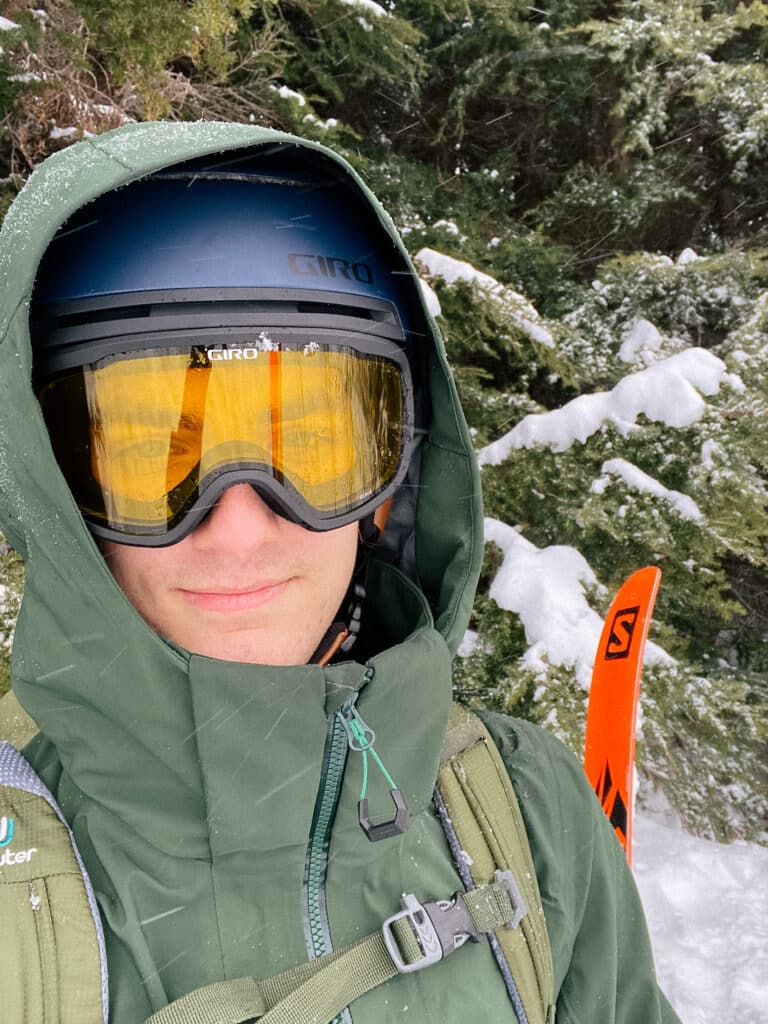
Tips for Staying Comfortable in Layers
In winter, start the trail feeling chilly
- There’s a saying that goes “Be bold, start cold”. When heading out on a trail that quickly climbs in elevation, you can expect it to be necessary to adjust layers fairly quickly as your body heats up. By starting out cold, you won’t need to strip off layers within the first 5 minutes on the trail.
Avoid putting on shell layers until necessary
- Waterproof-breathable shells have the word ‘breathable’ in the name, but aren’t nearly as breathable as other fabrics. When precipitation begins, feel free to toss your shell on, but don’t feel like you have to wear all of your other layers underneath it.
- A general rule is to always wear the least amount of layers you possibly can in any given situation.
Utilize all those vents!
- Don’t bake inside of your layers because you feel like you have to. Open your pit vents, legs vents, and any other vents you have to get rid of excess heat.
Take care of your clothing.
- Outdoor clothing is expensive. In order to boost the longevity of all your garments, carefully follow cleaning instructions. Some general rules that are easy to follow are to never use fabric softeners, scented detergent, or bleach.
- Clothing items with a DWR (durable water repellent) coating may require touch-ups or an entire reapplication of the DWR coating.
Don’t let your hands get too cold.
- When people think about layering, they don’t always think about layering gloves. Cold conditions require the use of gloves, and creating a layering system that works for you will keep your hands nice and toasty throughout a trip.
- Choose a merino wool or synthetic liner glove as your first line of defense. This layer should be relatively thin, allowing moisture to transpire through the glove. A thin glove is also nice to have when a task requires nimble hands. Besides letting gloves dry, you may never have to expose your bare hand to the cold.
- Your second glove layer should be insulating. Depending on the conditions, I sometimes put a mitten over top of my base layer. The mittens keep my hands nice and toasty, and I can easily remove the mitten whenever dexterity is required. Other times I will layer a five-fingered insulating glove over my base layer using that glove as my main defense against the cold.
- For extremely cold conditions, or when circulation to my hands is especially bad, I will throw on a mitten on top of my five-fingered glove. In order for this setup to be warm, however, it’s important to make sure your hand isn’t squished inside the glove. Warmth is created by the thin barriers of air between layers, but if your gloves are too tight, there is no air available to warm up.
“If your feet are cold, put on a hat”.
- Don’t underestimate the power of a winter hat. When your body becomes cold, it will do its best to keep vital areas warm (such as your head) while limiting blood flow to other areas (such as arms and legs). Putting on a beanie will help with heat loss through your head, thus keeping the rest of your body warm.
- For skiing, many helmets provide adequate warmth to ears and head alike. For extra warmth, using a balaclava or a Buff will keep your face and neck protected from the wind and cold.
- Consider bringing along two insulating hats. In terms of the warmth provided, a second beanie can be comparable to an extra midlayer, while taking up less space and not weighing nearly as much.
Continue to eat and drink.
- Starting the day with a big breakfast is ideal for your body to have enough fat and calories to stay warm. Bring along snacks that don’t just taste good, but also have nutritional value.
- Staying hydrated is also important for keeping warm.
Recommended Products and Brands
- Arc’teryx
- The Arc’teryx Atom LT
- Patagonia Nano Puff Jacket
- Mammut Stoney HS Jacket
- Outdoor Research Carbide Bib
- Black Diamond Rain Pants
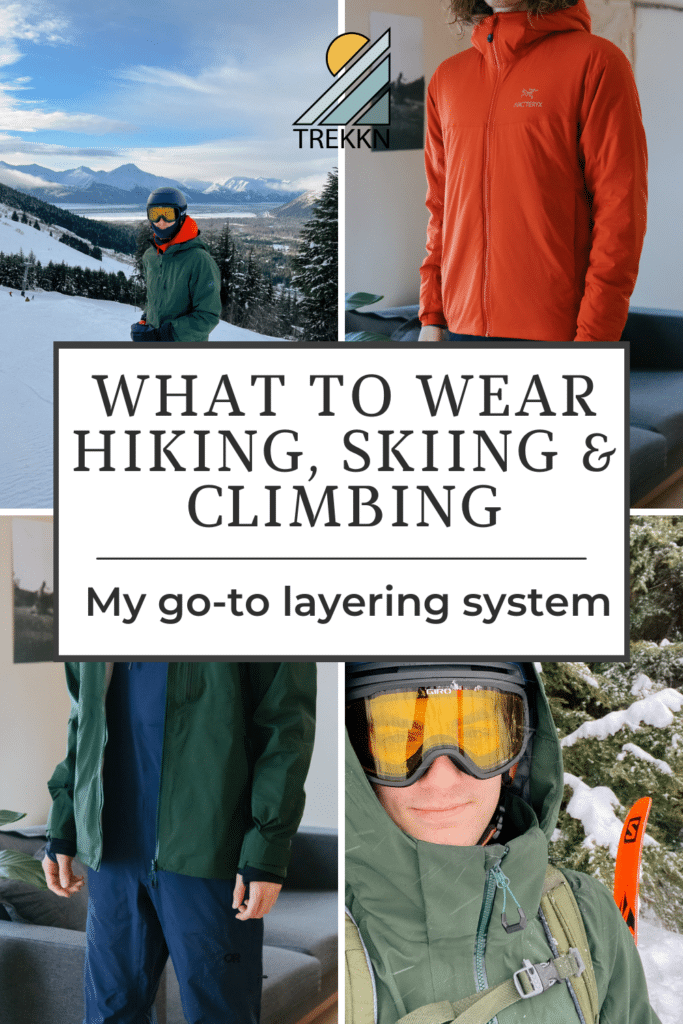
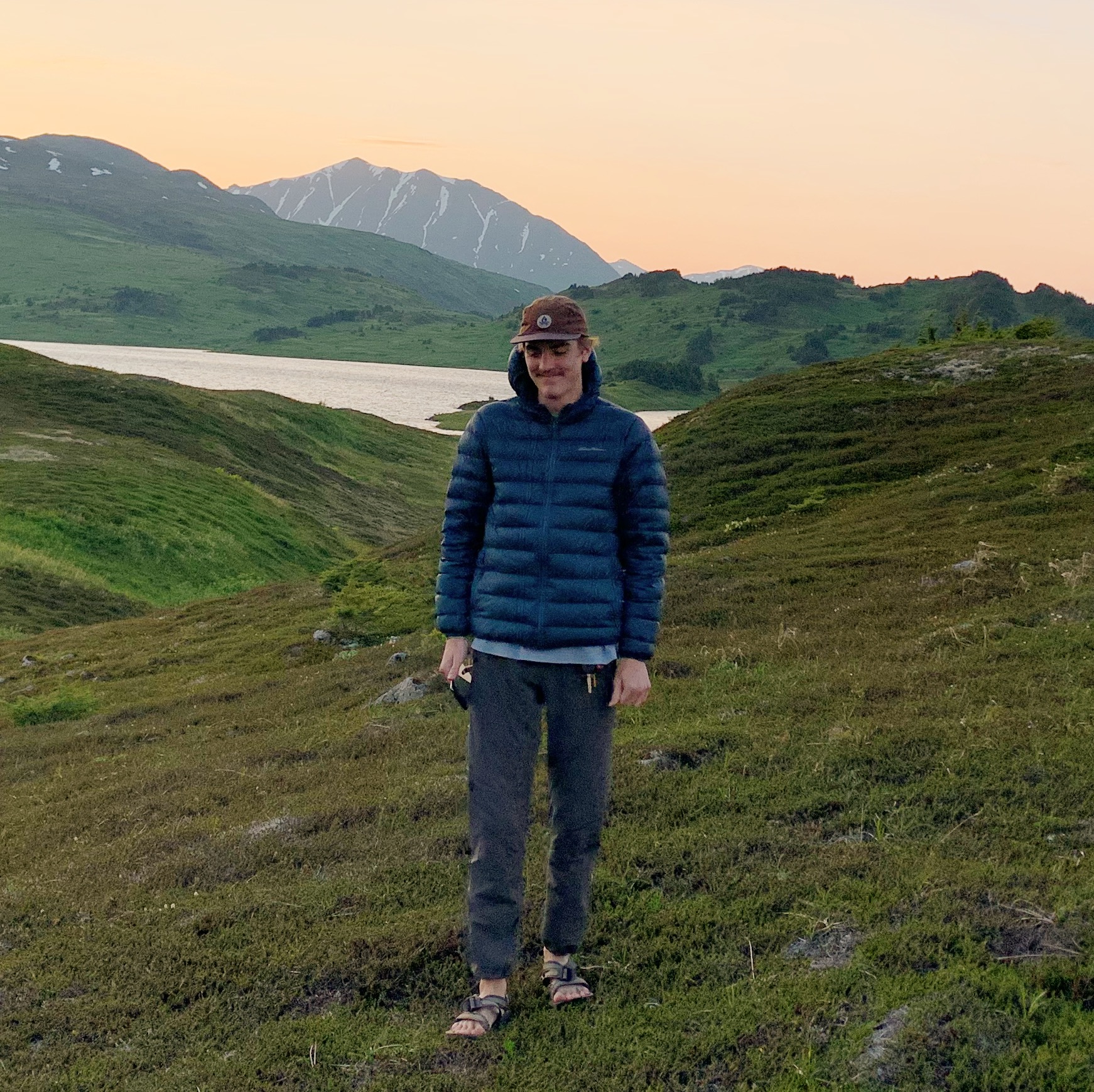
Josiah B gained invaluable experience while living on the road with his family, during which time he felt overcome with the desire to continue exploring. That search landed him in Seward, Alaska, where he currently resides. His love for the outdoors is welcome with open arms in the Last Frontier, and with an endless amount of hiking and backpacking to be done, he’s eager to share the best that Alaska has to offer.


